
HARDY
Celebrating 150 years of
Excellence through Innovation
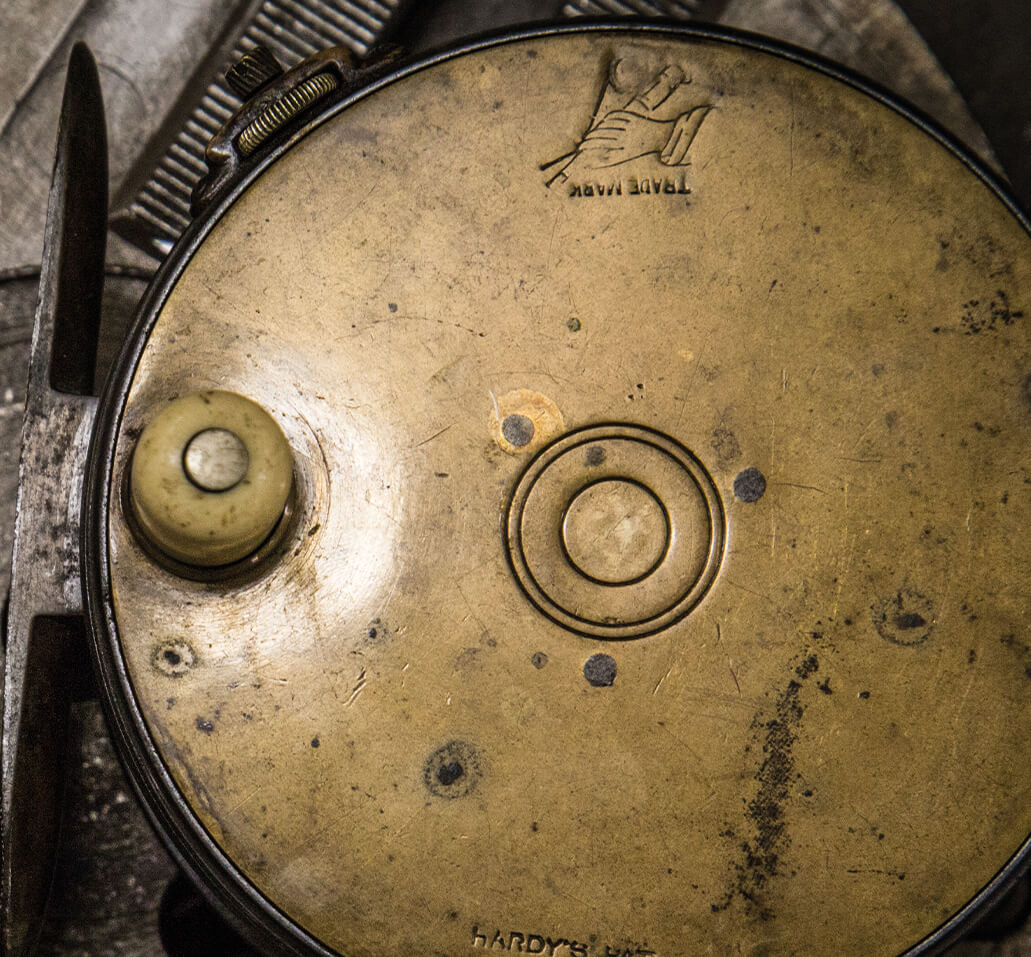
Hardy’s commitment to innovation has placed it at the cutting edge of tackle technology for 150 years.
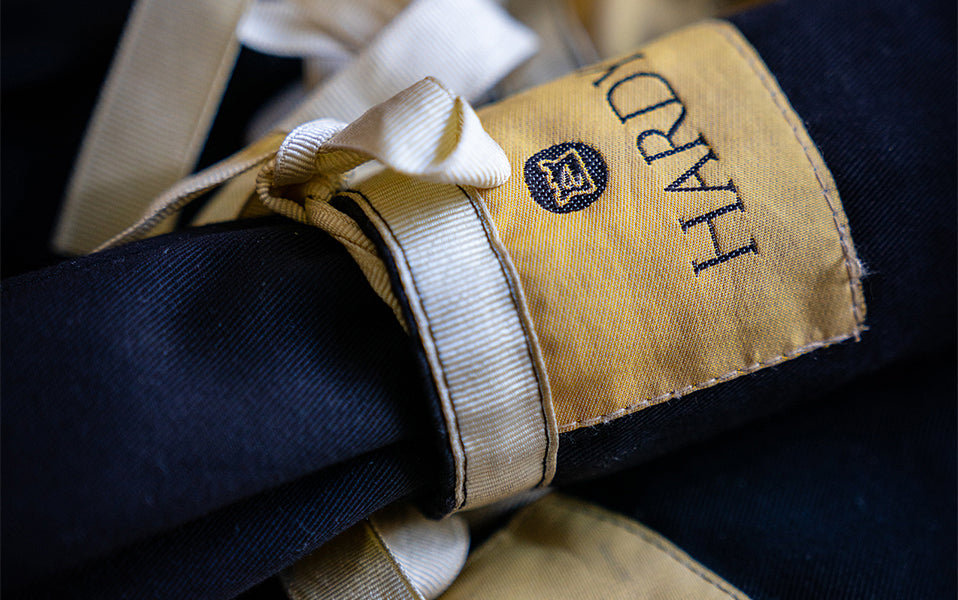

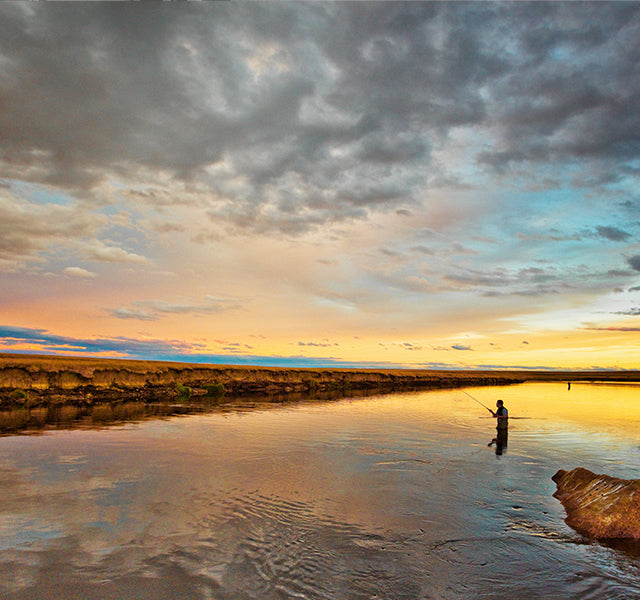

150th Anniversary Reels
150th Anniversary Saint George
The 150th anniversary reel features the best of Saint George design, in a modern package that plays homage to the past. It features the company’s 1912 check mechanism which had been carefully designed to eliminate jams. This new, limited edition is released 110 years after this iconic reel was designed, and 150 years after William Hardy founded the company that made it. In a beautiful satin Spitfire finish, this 3 inch reel boasts an eye-catching red agate line guard, numbered '1928' foot and is presented in a hand-made leather case.
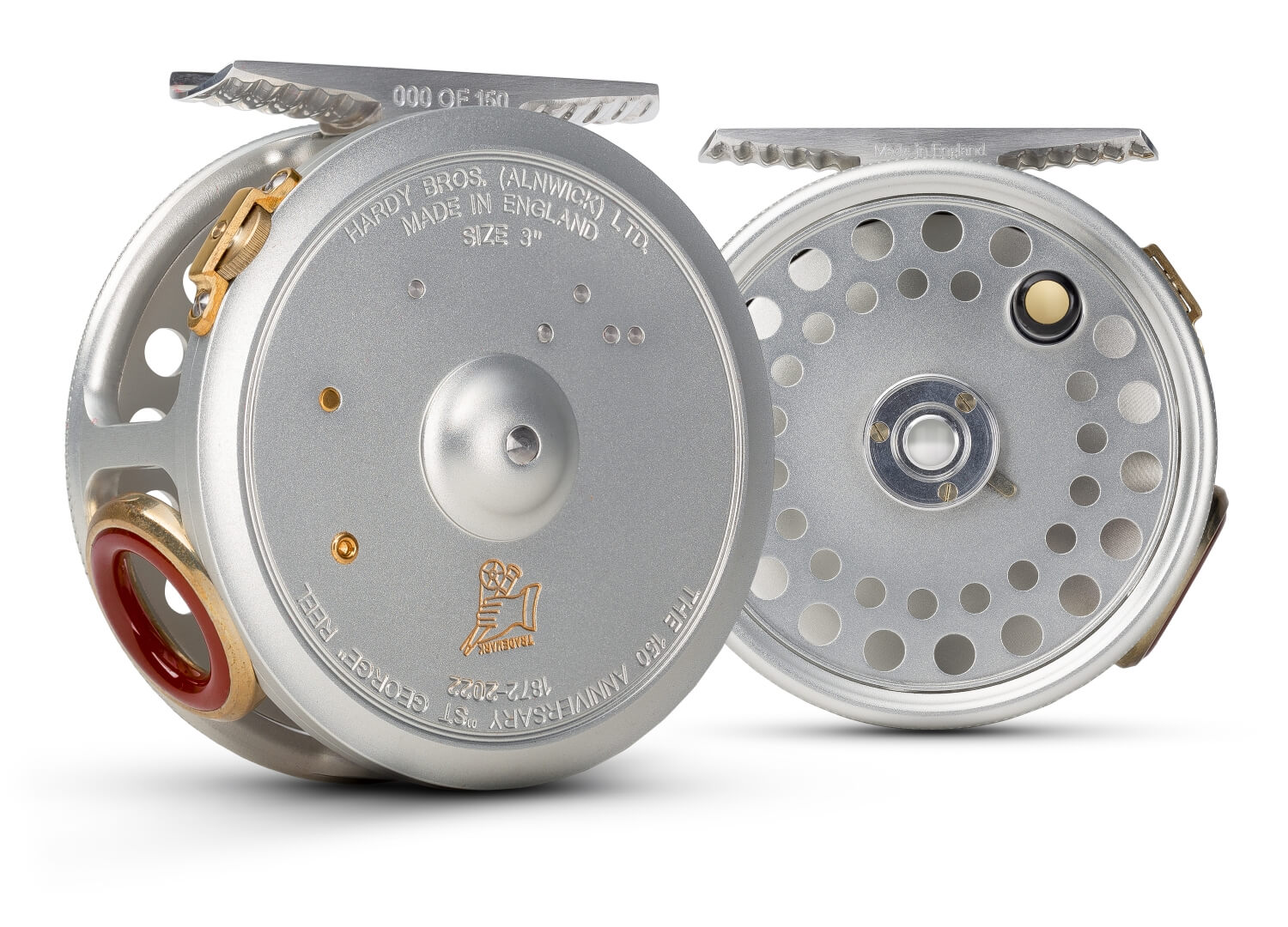
150th Anniversary Reels
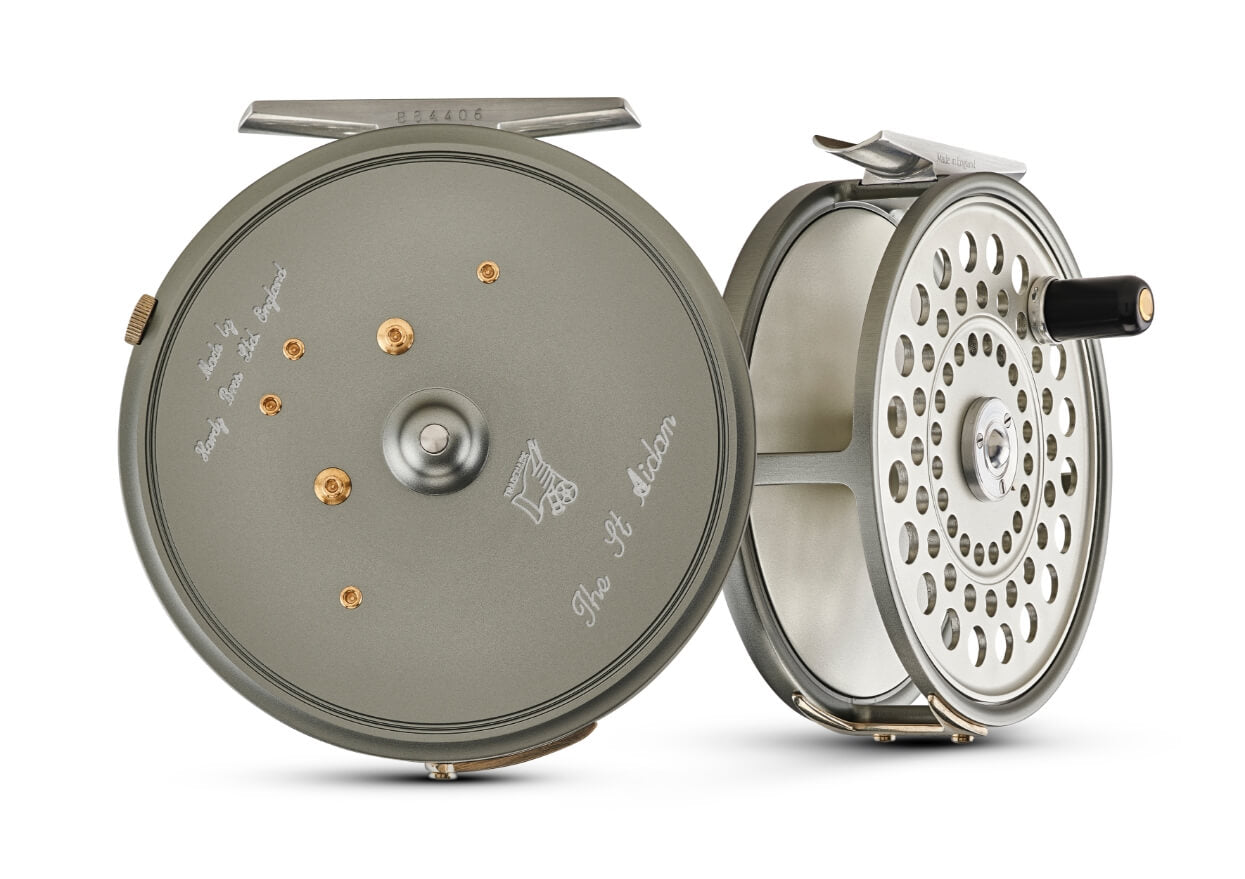
150th Anniversary Lightweight
When we looked through Hardy's history to find the best tackle to commemorate our 150th anniversary, it was quickly agreed that the Lightweight series in the 1970 edition was the correct choice to reisssue. A series that is a true Hardy original, and also price accessible, ensures the broadest participation in our celebration of Hardy. The full range is being reissued with a nickel silver double screw line guide, raised spindle casing, and a collectable leather reel bag. The line guard is marked with an engraved commemorative dating of 1872-2022 and will only be sold until December 2022.

1976
Hardy led the way in carbon fibre rod development, working jointly with the Royal Aircraft Establishment engineers who had discovered the material, and taking out a patent as early as 1971. The company’s first products built using the material were marketed in 1976 and were sensationally popular, not least because they halved rod weights overnight.

2007
Hardy North America began trading in Lancaster, Pennsylvania. America has always been a big part of Hardy’s market, but the foundation of the operation took customer service to the next level, with the reel repair service proving to be especially popular. Many best of show awards were to follow and the business has had an important role to play in the development of the Hardy brand and its products ever since. Above: The late Jim Hardy pictured with Jim Murphy, Director of Fly Operations.

2009
The introduction of SINTRIX was as great a leap forward in rod design as carbon fibre had been 30 years earlier. The nanosphere tech underpinning SINTRIX brought with it gains so great that our engineers did not believe the first stress test results they got. SINTRIX allowed blanks to be built which were 60% stiffer and 30% lighter than anything that had gone before, but there was so much more to it than that. Our designers found themselves able to develop ranges where the power of an 8 weight could be built into a rod which handled like a 5 weight, yet had the tip sensitivity of a 3 weight.

2021
Alnwick is the home of Hardy, and to celebrate the 150 years that the company has been connected to this most beautiful of Northumbrian towns, we have moved back to Bondgate. The new premises are only a few hundred yards from the spot where the factory shop opened onto the same road, but now we are within the gates of the old town, with its wide streets and rich history. With the museum upstairs, the shop offers the same warm welcome that fishermen expect from Hardy. And if you happen to lose track of time while you are with us? Well, there is more to fishing than catching fish.

1872
William Hardy set up in business in Paikes Street, Alnwick, Northumberland, as a gunsmith. The following year he took his brother, John James (known as J.J.), into partnership, and they started selling fishing tackle alongside guns, cartridges, cutlery, bicycles, and horse clipping machines. Both were such keen fishermen that soon they had built a reputation for selling quality tackle, which became the focus of their business. However, with this success came a challenge, which was that while the tackle the brothers retailed was good, they wanted to make it better. So in 1877, when they moved shop to Fenkle Street in Alnwick, they decided to design and build their own.

1883
By 1883 the company’s ranges of split bamboo rods were fine enough to win a gold medal at the Great International Fisheries Exhibition in London. This was by no means the first award the company had won, but it catapulted Hardy onto the international stage, given that 2.7 million people attended the exhibition, and competitors from over twenty countries sent product.

1890
With the opening of the Bondgate factory the brothers at last had the space to realise their dream, and for the next three quarters of a century, the complex would produce quality tackle that was sold worldwide. This imposing building was four storeys high, with access through a wide arch to the right of a spacious shop.

1891
The Perfect reel went on sale after three years of development by Forster Hardy, and with occasional interruptions, the reel has remained on sale until the present day. Countless different sizes and variants have been made, ensuring that the Perfect is the most collectable reel of all time. Examples are known to have been fished by three generations of the same family.

1897
Hardy opened premises at 61 Pall Mall and Forster Hardy moved to London to become the manager. At the beginning of every year, Forster was invited to the palace so that King George V could review the latest range of tackle, and a similar service was offered to other royal patrons, usually at the Savoy hotel.

1902
Hardy launched the Aöra Combined Fly and Spinner in 1895, but in 1902, William crossed through this in his master copy of the Angler’s Guide, before very carefully writing in the word “Aarö”. This was the name by which the lure would be known throughout the remainder of its long and illustrious career. In Norway, the river is called the Årøy, but both the Norwegians and their salmon were too polite to mention it.

1903
Louis Bouglé is a perfect example of the kind of sportsman with whom Hardy worked to develop their product range. Born in Orléans, but educated in England, Bouglé excelled at many sports, but he was particularly well known for his mastery of the dry fly. The Bouglé was a lightweight version of the Perfect reel that was discontinued during the Second World War and relaunched in 2013.

1910
Some extraordinary fly-casting was witnessed yesterday morning at the Tir aux Pigeons in the Bois de Boulogne, Paris, where a tournament is being held under the auspices of the Casting Club of France. Mr. John James Hardy, British champion salmon and trout fly caster, gave an exhibition of fly-casting, for which he used what is probably the lightest fishing-rod in the world. It is made of Palakona bamboo, 7ft. in length, and weighs only 2, 3/4 oz. With this rod Mr. Hardy cast twenty-five yards, which is much further than the average cast of an expert fisherman using a rod three times this weight. The rod is Mr. Hardy’s own invention.

1911
The St. George reel was one of the earliest large arbour reels made. Although it was designed over a century ago, it had many modern features, including a detachable, ventilated spool, and a sophisticated brake mechanism. Marketed alongside the Perfect, numerous variations were sold during the five decades during which this classic product remained on sale.

1914
What history of Hardy would be complete without a mention of the Anglers’ Guide? Irreverently known as the ‘Anglers’ Bible’ the Hardy catalogue was key to a mail order business that spanned the globe. The 1914 edition was over 400 pages long and it was sent to 23,000 customers, worldwide. For many, the fishing season began when the postman delivered it.

1921
The Fortuna reel was the workhorse of the Hardy saltwater range, and proved its worth time after time, helping to land fish well into the 700lb range. The incredible stopping power of this reel depended on an ingenious slipping clutch mechanism, and this iconic model was built in enormous sizes to cater for the Scarborough ‘tunny’ fishery and beyond. The range was revived in 2010 and the Fortuna name remains a byword for stopping power.

1928
Zane Grey was a legendary salt water fisherman and best-selling novelist whose search for the finest tackle led him to Hardys during the 1920s. Grey tasked the firm with producing the best salt water reel ever made and they duly delivered. Nothing but the highest quality materials were used in the manufacture of the what for many years was the most expensive reel that Hardy made – and that was without the custom leather case and toolkit that were available for it.

1929
Angler’s Pipe goes on sale. Designed and tested by J.J. himself, product was deleted in 1970.

1936
The Lightweight reel was developed for anglers who were asking for a lighter, high capacity reel to match rods like the CC de France range. Hardy responded by designing a simple, inexpensive product that weighed a third less than anything else in their range. The original Lightweight had an unventilated spool and was sold in a single 33/16 inch size, but in 1951, the iconic L.R.H. Lightweight was introduced with a ventilated spool and line guard. The two were sold together until the original was discontinued in 1964. The L.R.H. was named after Lawrence Robert Hardy, William Hardy’s son.

1965
By 1965, the Bondgate factory – despite the affection everyone felt for it – was no longer fit for purpose. So much history lay within its walls that Hardy had become forever connected with Alnwick, and when the company moved to new, purpose-built premises on the nearby Willowburn industrial estate there were already plans to celebrate its connection with the town. Many readers will have fond memories of the shop and its welcoming staff, but one of the star attractions was the museum, which was packed with rare Hardy tackle, some of which is illustrated in this catalogue, and all of which was built in Alnwick.

1969
The Marquis reel range was one of the first quality reels designed after the move to Willowburn, and it proved to be a firm favourite. Among the many attractions of the Marquis is the exposed polished rim of its ventilated spool, and – updated to modern specifications – it remains in production today, half a century after its debut.

1976
Hardy led the way in carbon fibre rod development, working jointly with the Royal Aircraft Establishment engineers who had discovered the material, and taking out a patent as early as 1971. The company’s first products built using the material were marketed in 1976 and were sensationally popular, not least because they halved rod weights overnight.

2007
Hardy North America began trading in Lancaster, Pennsylvania. America has always been a big part of Hardy’s market, but the foundation of the operation took customer service to the next level, with the reel repair service proving to be especially popular. Many best of show awards were to follow and the business has had an important role to play in the development of the Hardy brand and its products ever since. Above: The late Jim Hardy pictured with Jim Murphy, Director of Fly Operations.

2009
The introduction of SINTRIX was as great a leap forward in rod design as carbon fibre had been 30 years earlier. The nanosphere tech underpinning SINTRIX brought with it gains so great that our engineers did not believe the first stress test results they got. SINTRIX allowed blanks to be built which were 60% stiffer and 30% lighter than anything that had gone before, but there was so much more to it than that. Our designers found themselves able to develop ranges where the power of an 8 weight could be built into a rod which handled like a 5 weight, yet had the tip sensitivity of a 3 weight.

2021
Alnwick is the home of Hardy, and to celebrate the 150 years that the company has been connected to this most beautiful of Northumbrian towns, we have moved back to Bondgate. The new premises are only a few hundred yards from the spot where the factory shop opened onto the same road, but now we are within the gates of the old town, with its wide streets and rich history. With the museum upstairs, the shop offers the same warm welcome that fishermen expect from Hardy. And if you happen to lose track of time while you are with us? Well, there is more to fishing than catching fish.

1872
William Hardy set up in business in Paikes Street, Alnwick, Northumberland, as a gunsmith. The following year he took his brother, John James (known as J.J.), into partnership, and they started selling fishing tackle alongside guns, cartridges, cutlery, bicycles, and horse clipping machines. Both were such keen fishermen that soon they had built a reputation for selling quality tackle, which became the focus of their business. However, with this success came a challenge, which was that while the tackle the brothers retailed was good, they wanted to make it better. So in 1877, when they moved shop to Fenkle Street in Alnwick, they decided to design and build their own.

1883
By 1883 the company’s ranges of split bamboo rods were fine enough to win a gold medal at the Great International Fisheries Exhibition in London. This was by no means the first award the company had won, but it catapulted Hardy onto the international stage, given that 2.7 million people attended the exhibition, and competitors from over twenty countries sent product.

1890
With the opening of the Bondgate factory the brothers at last had the space to realise their dream, and for the next three quarters of a century, the complex would produce quality tackle that was sold worldwide. This imposing building was four storeys high, with access through a wide arch to the right of a spacious shop.

1891
The Perfect reel went on sale after three years of development by Forster Hardy, and with occasional interruptions, the reel has remained on sale until the present day. Countless different sizes and variants have been made, ensuring that the Perfect is the most collectable reel of all time. Examples are known to have been fished by three generations of the same family.

1897
Hardy opened premises at 61 Pall Mall and Forster Hardy moved to London to become the manager. At the beginning of every year, Forster was invited to the palace so that King George V could review the latest range of tackle, and a similar service was offered to other royal patrons, usually at the Savoy hotel.

1902
Hardy launched the Aöra Combined Fly and Spinner in 1895, but in 1902, William crossed through this in his master copy of the Angler’s Guide, before very carefully writing in the word “Aarö”. This was the name by which the lure would be known throughout the remainder of its long and illustrious career. In Norway, the river is called the Årøy, but both the Norwegians and their salmon were too polite to mention it.

1903
Louis Bouglé is a perfect example of the kind of sportsman with whom Hardy worked to develop their product range. Born in Orléans, but educated in England, Bouglé excelled at many sports, but he was particularly well known for his mastery of the dry fly. The Bouglé was a lightweight version of the Perfect reel that was discontinued during the Second World War and relaunched in 2013.

1910
Some extraordinary fly-casting was witnessed yesterday morning at the Tir aux Pigeons in the Bois de Boulogne, Paris, where a tournament is being held under the auspices of the Casting Club of France. Mr. John James Hardy, British champion salmon and trout fly caster, gave an exhibition of fly-casting, for which he used what is probably the lightest fishing-rod in the world. It is made of Palakona bamboo, 7ft. in length, and weighs only 2, 3/4 oz. With this rod Mr. Hardy cast twenty-five yards, which is much further than the average cast of an expert fisherman using a rod three times this weight. The rod is Mr. Hardy’s own invention.

1911
The St. George reel was one of the earliest large arbour reels made. Although it was designed over a century ago, it had many modern features, including a detachable, ventilated spool, and a sophisticated brake mechanism. Marketed alongside the Perfect, numerous variations were sold during the five decades during which this classic product remained on sale.

1914
What history of Hardy would be complete without a mention of the Anglers’ Guide? Irreverently known as the ‘Anglers’ Bible’ the Hardy catalogue was key to a mail order business that spanned the globe. The 1914 edition was over 400 pages long and it was sent to 23,000 customers, worldwide. For many, the fishing season began when the postman delivered it.

1921
The Fortuna reel was the workhorse of the Hardy saltwater range, and proved its worth time after time, helping to land fish well into the 700lb range. The incredible stopping power of this reel depended on an ingenious slipping clutch mechanism, and this iconic model was built in enormous sizes to cater for the Scarborough ‘tunny’ fishery and beyond. The range was revived in 2010 and the Fortuna name remains a byword for stopping power.

1928
Zane Grey was a legendary salt water fisherman and best-selling novelist whose search for the finest tackle led him to Hardys during the 1920s. Grey tasked the firm with producing the best salt water reel ever made and they duly delivered. Nothing but the highest quality materials were used in the manufacture of the what for many years was the most expensive reel that Hardy made – and that was without the custom leather case and toolkit that were available for it.

1929
Angler’s Pipe goes on sale. Designed and tested by J.J. himself, product was deleted in 1970.

1936
The Lightweight reel was developed for anglers who were asking for a lighter, high capacity reel to match rods like the CC de France range. Hardy responded by designing a simple, inexpensive product that weighed a third less than anything else in their range. The original Lightweight had an unventilated spool and was sold in a single 33/16 inch size, but in 1951, the iconic L.R.H. Lightweight was introduced with a ventilated spool and line guard. The two were sold together until the original was discontinued in 1964. The L.R.H. was named after Lawrence Robert Hardy, William Hardy’s son.

1965
By 1965, the Bondgate factory – despite the affection everyone felt for it – was no longer fit for purpose. So much history lay within its walls that Hardy had become forever connected with Alnwick, and when the company moved to new, purpose-built premises on the nearby Willowburn industrial estate there were already plans to celebrate its connection with the town. Many readers will have fond memories of the shop and its welcoming staff, but one of the star attractions was the museum, which was packed with rare Hardy tackle, some of which is illustrated in this catalogue, and all of which was built in Alnwick.

1969
The Marquis reel range was one of the first quality reels designed after the move to Willowburn, and it proved to be a firm favourite. Among the many attractions of the Marquis is the exposed polished rim of its ventilated spool, and – updated to modern specifications – it remains in production today, half a century after its debut.

1976
Hardy led the way in carbon fibre rod development, working jointly with the Royal Aircraft Establishment engineers who had discovered the material, and taking out a patent as early as 1971. The company’s first products built using the material were marketed in 1976 and were sensationally popular, not least because they halved rod weights overnight.

2007
Hardy North America began trading in Lancaster, Pennsylvania. America has always been a big part of Hardy’s market, but the foundation of the operation took customer service to the next level, with the reel repair service proving to be especially popular. Many best of show awards were to follow and the business has had an important role to play in the development of the Hardy brand and its products ever since. Above: The late Jim Hardy pictured with Jim Murphy, Director of Fly Operations.

2009
The introduction of SINTRIX was as great a leap forward in rod design as carbon fibre had been 30 years earlier. The nanosphere tech underpinning SINTRIX brought with it gains so great that our engineers did not believe the first stress test results they got. SINTRIX allowed blanks to be built which were 60% stiffer and 30% lighter than anything that had gone before, but there was so much more to it than that. Our designers found themselves able to develop ranges where the power of an 8 weight could be built into a rod which handled like a 5 weight, yet had the tip sensitivity of a 3 weight.

2021
Alnwick is the home of Hardy, and to celebrate the 150 years that the company has been connected to this most beautiful of Northumbrian towns, we have moved back to Bondgate. The new premises are only a few hundred yards from the spot where the factory shop opened onto the same road, but now we are within the gates of the old town, with its wide streets and rich history. With the museum upstairs, the shop offers the same warm welcome that fishermen expect from Hardy. And if you happen to lose track of time while you are with us? Well, there is more to fishing than catching fish.